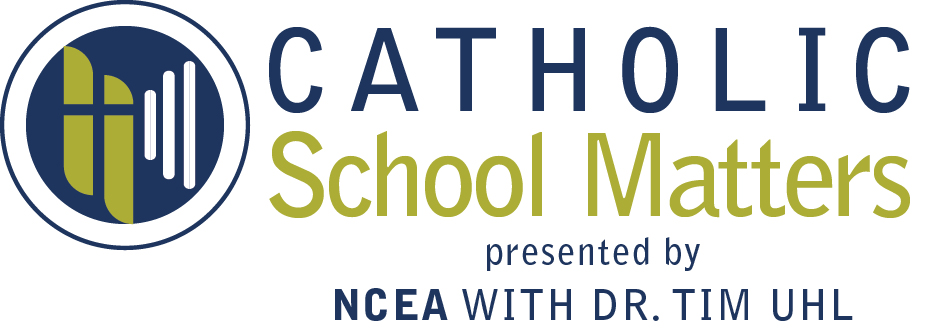Last month I was able to visit Seton Catholic Schools in Milwaukee. Their new Catholic school system is impressive on many levels—most importantly their laser-focus on improving teacher effectiveness and the instructional culture.
First, some background. Seton Catholic Schools was founded in 2016 and is in its second year of operation. The network opened with 9 former parish (or inter-parish) Catholic schools serving approximately 2,000 students. This year, they are serving 12 schools and 3,000 students. The Archdiocese has identified 26 possible schools and the network has also suggested they might re-open previously closed schools or open entirely new schools in the future.
The Archdiocese of Milwaukee’s long-time superintendent, Dr. Kathleen Cepelka, was behind the move and serves on Seton’s Board of Directors. The idea was to give the schools flexibility, a new identity, and a clear mission. The schools have stopped acting like individual entities and can work together. Seton Catholic can recruit talented teachers and principals and place them where they are most needed. They have developed a master and residency teaching programs to mentor young teachers.
In a city with school vouchers for poor students, Seton Catholic Schools was designed to embrace the flexibility of a charter school network. The network has captured cost savings through economies of scale (sharing art teachers, for example) and passed the savings on to the schools. The network has been able to raise additional funds through its mission focus. And the additional money has been spent on coaching for school leaders and teachers.
Principal job descriptions have changed. They are now primarily the instructional leaders of their buildings called to coach their teachers in order to improve instruction. They are challenged to be coached themselves in order to develop their own toolbox. The principals are no longer the coordinators of school fundraisers, the business manager, the personnel department, or the facility department. All of these functions have been absorbed by the central office of the network which puts effective instruction as its heart.
As the network scales up its innovative model, it will be interesting to measure its success: academic gains of the students, total enrollment across the network, not to mention the retention of teachers and leaders. Right now, however, the model is worth replicating. It is displaying the focus on innovative governance outlined by FADICA a few years ago.
Here is a sample of articles by and about Seton Catholic Schools:
- Bill Hughes (the Chief Academic Officer) published three Guest Ed Week blogs last fall “Transforming Catholic Education in Milwaukee” “Talent Wins at Seton Catholic Schools” “The Era of the Textbook is Over” and “Guiding Questions for Successful School Transformation”
- Milwaukee Journal-Sentinel 2017 column “New Developments at 3 of Milwaukee’s More Interesting ‘Mini-districts’” and 2016 article “Seton Bolsters Catholic Voucher Schools”
- “The Catholic Schools Saved by Vouchers” in The Atlantic (Feb 2017)
- Listen to my podcast interview with Dr. Bill Hughes where he explains his educational philosophy
The Seton Catholic Schools network is but one example of an innovative model. These models are percolating across the country. Below I include thirteen other models (in alphabetical order) I could identify along with links and articles. It’s been a while since I’ve seen a list of these innovations in one place. Enjoy!
Today’s edition of Catholic School Matters is devoted to Catholic school innovation. I blog about my visit last month to Seton Catholic Schools in Milwaukee, a remarkable charter-like Catholic school network. It would benefit any school or diocesan school leader to pay attention to what’s going on there.
I then include descriptions and links to thirteen other innovative models: ACE Academies, Catholic Schools Center of Excellence, Cristo Rey, Faith in the Future, Drexel Schools, Healey Education Foundation, Independence Mission Schools, Jubilee Schools, Lumen Christi Schools, Nativity/Miguel network, Partnership Schools (NYC), Seton Education Partners, and TWIN-CS.
My top 5 all focus on Seton Catholic Schools (Milwaukee):
- Dr. Bill Hughes (the Chief Academic Officer) published three Guest Ed Week blogs last fall “Transforming Catholic Education in Milwaukee” “Talent Wins at Seton Catholic Schools” “The Era of the Textbook is Over” and “Guiding Questions for Successful School Transformation”
- Milwaukee Journal-Sentinel 2017 column “New Developments at 3 of Milwaukee’s More Interesting ‘Mini-districts’” and 2016 article “Seton Bolsters Catholic Voucher Schools”
- “The Catholic Schools Saved by Vouchers” in The Atlantic (Feb 2017)
I’ll be back next week with a regular issue of links and a blog about the Church Documents series.
